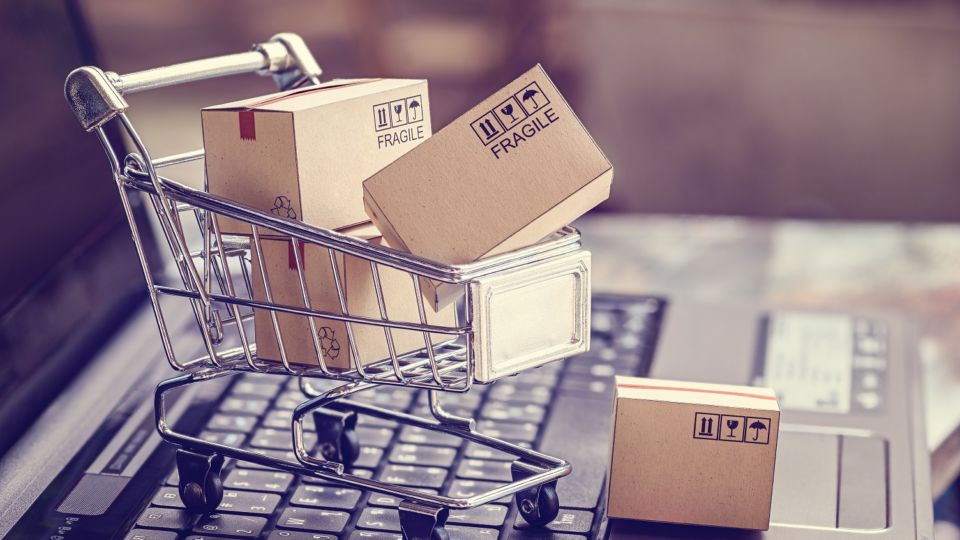 Since COVID-19, new direct-to-consumer brands are looking to position themselves to take advantage of the growth in online shopping. Stores created through Shopify Plus increased by 62% between March and April 2020.
Since COVID-19, new direct-to-consumer brands are looking to position themselves to take advantage of the growth in online shopping. Stores created through Shopify Plus increased by 62% between March and April 2020.
Who can blame these brands? There has never been a more exciting time to invest behind the combination of consumer behavioral change and technological acceleration, the key drivers shaping the future of the retail industry.
The DTC ‘discovery to delivery’ business model also has many advantages. The business is able to own the entire end-to-end journey that consumers experience and develop a direct, digitally driven and engaging relationship with them. Direct-to-consumer brands using smart technology also have unfiltered insight into customer behavior and real-time data, at every step of the decision-making process.
The rise of prominent DTC players has made this channel increasingly attractive to me-too brands, and this has only been accelerated since the pandemic with more brands wanting their share of the market. But as a business model, it doesn’t come without its challenges; particularly within the scope of retail operations.
Retail Operations: the Oft-Ignored DTC Backbone
While most brands are aware of everything they need to do on the front end, in the race to attract direct sales few seek to address the operational complexities that lie beyond the buy button. In fact, many brands switching to a DTC model quickly learn that managing all the operational touch points can be extremely difficult to coordinate.
That’s because once a DTC brand bypasses a retailer, they become directly responsible for every single scenario in the buying journey, including pre- and post-purchase experiences such as delivery and returns, inventory management and customer communications. With brands in charge of every step of a customer’s purchase journey, brands must recognize that at any moment they risk getting things wrong, which can cause real backlash from their customers.
The challenge will be even tougher in the New World, where online businesses are operating in an arena of greater competition, heightened demand and greater pressure on their operational capabilities. Retailers need to be asking themselves if their current setup supports the increases in traffic of the new normal.
With that in mind, it’s clear that DTC is far from an open goal. Pitfalls are plentiful. Retailer’s need to be wary of prioritizing growth and aesthetics at all costs, resulting in mis-execution, weak infrastructure and poor consumer experience. There’s a real risk in not having a solid infrastructure in place to support demand, and 75% of brands agree that if you get your DTC approach wrong, it does far more harm than good.
Navigating the Direct-to-Consumer Tightrope
Brands that are considering the DTC space have to understand that this channel is going to expand past what they previously had. When you’re operating in different markets and you’re scaling quickly, you’ve got to have the right retail operations in place to respond effectively. Without the mechanics to handle inventory, shipping and logistics across multiple channels and locations, or for more real-time customer-facing support, the business is quickly going to run into problems.
When talking about the importance of operations to successful DTC models, Eve Mattress Co-Founder Kuba Wieczorek puts it best: “That whole backend is so mega important that if you don’t get it right you’re screwed.”
Wieczorek argues that brands must ensure the supply chain is as good as it can possibly be before they launch into the DTC arena, “Not just go ‘let’s just launch this and see what happens’”, which is what I think a lot of young brands are guilty of doing”.
The Secret Ingredient to DTC Success
COVID-19 will accelerate an already fast-moving trend and create a vast blue ocean of opportunity for brands with the right end-to-end infrastructures in place. Many retailers are impatient for their slice of the DTC pie — but this shouldn’t be at the expense of a brand’s operations. Post-purchase experiences from delivery to returns will influence a customer’s loyalty — and collectively, each of these scenarios should be recognized as equally important as those on the front end.
The real secret of the DTC model relies on understanding that ownership of the total customer experience is more important than the product itself. When you’re a DTC brand, shipping, returns and incredible response times all become part and parcel of the proposition. This means DTC is more than simply a channel — it requires thinking about the feelings you want to create for customers every step along the way and removing any potential bottlenecks within the end-to-end customer journey.
Superior DTC models will cut into market share and, with time, will likely become the new market leaders. But have no doubt, their successful consumer-focused strategy will be built on top of stable foundations.
Brightpearl has launched a guide to succeeding at DTC that can be found here.
When Derek O’Carroll joined Brightpearl three years ago, he took on the biggest risk any CEO can take — a turnaround. Since taking the helm as CEO, O’Carroll has led the retail operations platform from stagnant growth to more than $12 million in revenue, nearly 1,400 customers worldwide, and managing more than $3 billion in orders.




